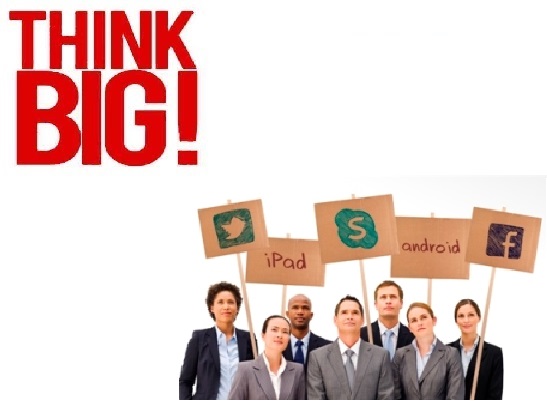Users of enterprise software marvel at the ease of use of facebook, twitter and gmail on their mobiles, tablet computers and desktops! Then they wonder why their enterprise software should not be as easy to use or at least be available from their own devices. The CEO wonders why she cannot see the company graphs and charts in vibrant colors on her iPad at home on her sofa, while watching TV! This is where the consumerization of the enterprise sets up expectations of mobility, flexibility, ease of use and at a minimum, just being able to access enterprise applications from these other devices!
Consumerization of the enterprise is exciting from an end user point of view, but brings with it a number of new issues of security, availability, and application responsiveness that need to be addressed by the enterprise software maker or the IT department. Enterprise software product start-ups need to take this trend very seriously since mobiles and tablets are getting only more powerful, less expensive, and ubiquitous. By the time they mature and emerge from a start-up stage, this may not be a nice to have but a must have. So, here’s a Who, What, When, Why and How of Consumerization of Enterprise Software. This is a rather involved subject to be covered in a single article. I will cover the basics and provide links to additional material as appropriate.
The Why
Users of enterprise applications like the mobility that comes with smartphones and tablet computers. They see fairly sophisticated things done with these devices in their personal lives and are wondering why the same should not be true of their enterprise applications! They see that these devices are powerful computers in their own right and are wondering why they should not be using them for work.
The What
Consumerization results in a number of new expectations of enterprise software – use of inexpensive commodity servers for hosting the application if on-premises or a Software As a Service (SaaS) model, browser based interfaces, access from mobile devices and ease of use that matches consumer applications like Google, Twitter and Facebook. Consumerization involves the design and implementation of Bring Your Own Device (BYOD) policies where employees use their own devices to access enterprise applications and data. What happens to the enterprise data that may be stored on them, if they lose this device or it gets stolen? What happens when this employee leaves the company? How do you make sure that the company data or the applications are no longer accessible?
The When
In many developed countries, smartphones and tablet computer penetration are near saturation already with many individuals and households having many of these devices, each. In India, the annual penetration and total market saturation may be lesser but it is only a matter of time. Even in India, at the C-Suite level usage of these devices may be pretty much near saturation. So it’s not a question of if, but only a matter of when. This is especially important to enterprise start-ups that will face all of these issues by the time they have their products ready and achieve market fit.
The Who
Consumerization involves a host of policy and technology issues. Not all of them could be resolved only with the software product maker or the IT department. Access to applications and data may be policy issues to be determined by management and implemented by the IT security folks within the company. Software designers may need to address the ease of use issues that bring the enterprise applications closer in user experience to popular consumer applications like Google, Twitter and facebook.
The How
Consumerization involves making the user interface of the enterprise application on mobile devices, easy-to-use like those of consumer applications, native or HTML5 based. Bring Your Own Device policy implementation may involve the use of Mobile Device Management (MDM) software which allows organizations to register and allow only authorized devices to access enterprise applications. In case employees need to be allowed access only to certain applications and not to others selectively, Mobile Application Management (MAM) software may need to be used. Chris Swan presents these issues in a very organized and understandable fashion in a video here and a presentation here, in case someone wants to dive deeper into the technology issues.
Consumerization of the Enterprise is about managing the expectations of the users of enterprise applications properly; answering questions such as – why can’t I use my smartphone or tablet to access the company’s application? Why shouldn’t their interfaces be as easy-to-use as my Gmail, Twitter or facebook? The technology and the design approaches for making this happen are already there. It’s only through careful analysis and addressing of issues that these objectives can be met, while at the same time balancing other issues such as security of data and applications!
Water cooler chatter 15 years ago used to be about what happened on Seinfeld. Now it’s ‘Look at what I’m doing on the enterprise network with my mobile device. – Bob Egan, vice president of mobile strategy at Mobiquity


